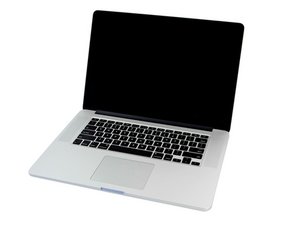MacBook Pro 15": replacing battery beyond my skill; recommendations?
I bought a used 2014 15" MacBook Pro (2.8GHz, 16/500) in November (four months ago), near-mint condition. Having just had to replace a swollen battery in a 2015 15" MBPro, in addition to running ASD and other tests on this one I also opened it up to check the battery, which looked fine, like new. I also ran coconutBattery on it, which reported 4 cycles, 100%/100% (unfortunately I didn't keep a screenshot).
Three months later, I noticed that the trackpad was getting to be difficult to click, so I opened it again, and the battery is now swollen – not as badly as the one in the 2015 (or the one in a 2013 15" MBPro I also have waiting for attention). I'm now using it with the bottom case under it but not attached, as that would make the trackpad hard to use – and I'm not sure if I could replace all the tiny screws anyway with the battery so swollen.
What causes these batteries to swell? I've now owned three 15" Retina MBPros, and all have had this problem. I did do some intensive work with this MBPro not long after I got it, downloading and converting some videos. However, given that it's a MacBook "Pro", one would think it should be capable of such work without suffering damage.
This MBPro sits on my desk and is on pretty much 24/7, though in sleep at night and periodically during the day. (I also got a 13" 2014 MBPro in December, also in good condition, and its battery is still like new; but I haven't done any of the video work with it. Now I'm hesitant to do so; but it is something I'll want to do again sometime. Do I need to get a fan or something?)
I'm attaching a current coconutBattery readout. The ~90° temperature is about normal (I've installed TG Pro to monitor it, and indeed it does get very hot – CPU over 100°C briefly – when doing the video conversion.) I have a coconutBattery readout from three weeks ago that shows 99% battery life, so it's lost a little since then.

Anyway, so I now have to replace the battery in my nice new (to me) MacBook Pro. I know iFixIt offers instructions, tools, and batteries (though I'm a little dismayed to see in a search for "battery" in this forum how many of the replacements seem to be faulty). But the job is really beyond my skill level. It'll cost ~$250 to get it from Apple, which is probably the best bet, but I don't really need the included new top case with keyboard and trackpad. And naturally I'd like to spend less if possible. Can anybody recommend a battery replacement service that does reliably good, guaranteed work and is cheaper than Apple?
좋은 질문 입니까?


 7
7  7
7  1
1 